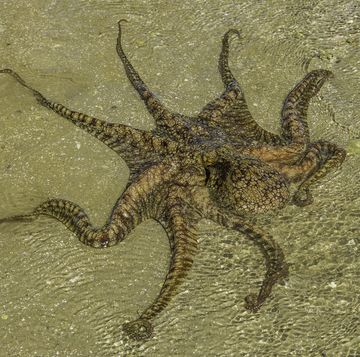Scientists have discovered remains from a new species of prehistoric shark, previously unaccounted for in our understanding of the species. The shark lived around 20 million years ago and is believed to have grown to 12 feet in length, smaller than a great white, but still about the size of a car. Their research has been published in the journal Historical Biology.
The most commonly known giant prehistoric shark is the Megalodon, which was much larger, at around 60 feet. This new shark is a descendant of Megalodon, but with 45 million years separating them. This new discovery calls into question Megalodon's family tree.
The new shark, called Megalolamna paradoxodon, ranged all over the globe. Researchers found fossilized teeth on both North American coasts, plus Japan and South America. These teeth bear a resemblance to the teeth of some modern shark species like the salmon shark, but there are some key differences that make that relationship unlikely.
Instead, Paradoxodon likely belongs to the genus Otodus, and that means Megalodon does too. Most scientists have previously classified Megalodon as belonging to the genus Carcharocles, but this is the first concrete evidence suggesting otherwise.
There are still some questions regarding this new shark, such as how there can be a 45 million year gap in the fossil record between it and its ancestor. It's still a mystery just how Paradoxodon evolved, but hopefully more discoveries will help answer that.
Source: ScienceAlert















